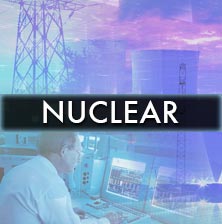The following is a small selection of items recently published by EPRI. To view complete lists of your company-funded research reports, updates, software, training announcements, and other program deliverables, log in at www.epri.com and go to Program Cockpits.

The United States has about 80,000 dams that do not produce power. Some of this infrastructure can potentially be used to develop hydropower plants at a lower capital cost. This paper discusses the associated challenges and emerging innovative technologies.

Multistage seals in nuclear reactor coolant pumps occasionally exhibit excessive or insufficient leakage. This study investigates the feasibility of a controllable seal to mitigate such problems.

Operational technology (OT) and information technology (IT) applications are converging in the electric power industry. This research investigates best practices for addressing the organizational and technical impacts of this trend, drawing on publicly available information from research advisory firms, academic institutions, consultants, systems integrators, and software vendors.

EPRI engaged the Work Planning Users Group (a technical advisory group of nuclear industry personnel, subject matter experts, and vendors) to create a standard that the industry can use to measure the performance of a nuclear plant’s planning organization. This report accompanies the EPRI Web-Based Work Planning Assessment Tool and provides a graded approach to assessing work planning.

This report summarizes EPRI knowledge and research related to the life management and performance of power plant components made from tempered martensitic steels (such as Grade 91 and 92 steels).

Online monitoring of nuclear plant components can improve reliability and reduce maintenance costs, and common designs for wireless infrastructure and associated sensors can make online monitoring more economical. This report provides design guidance for the installation of (1) a distributed antenna system for establishing wireless connectivity in a plant and (2) wireless vibration sensors on a pump motor.

With electromagnetic signature analysis, power plant operators evaluate the electrical activity of plant components to detect abnormalities, informing maintenance and repair decisions. This report provides guidance on electromagnetic signature analysis and describes equipment responses to various defects across a range of frequencies.

This report provides on update on research to improve understanding of risk-based methods for transmission planners, develop and enhance practical methods to aid planning decisions, and demonstrate the benefits of risk-based approaches using practical case studies.

Telecom planning is an organization and set of operational functions that are responsible for the reliable operation of a utility's communications systems. This report is intended to help utilities define and advance their telecom planning, structure a planning organization, and identify internal capabilities.

StorageVET is a free, publicly available simulation tool that helps users examine the value of energy storage projects for a range of applications. It can inform design, siting, and operation of storage systems as well as policymaking and research.

Drawing on a review of scientific and other literature, this report examines the current state of science, knowledge gaps, and opportunities for future research across a range of environmental and human health impacts associated with wind and solar energy technologies. The review focused on these four subject areas: air and water quality, ecological impacts, end-of-life waste management, and human health impacts.

Researchers subjected 46 power system protection relays to the E1 component of a high-altitude electromagnetic pulse to determine what they can withstand before damage occurs.